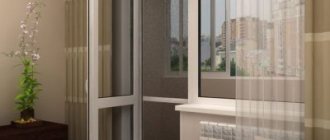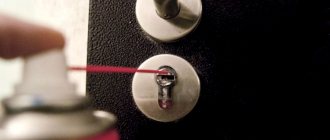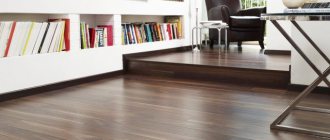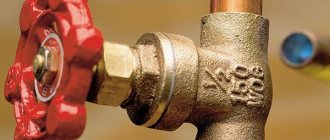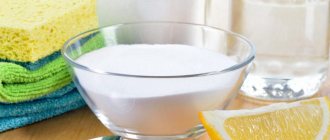Why do doors creak?
As long as the door is working normally, no one thinks about possible problems. But when they appear, the reasons may be different in each specific case. It is necessary to carefully check why the sash cannot open and close silently.
Fastening defects
Installing a leaf in a doorway is not as simple a task as it might seem. Defects that are invisible at first glance turn into a serious problem over time.
Incorrectly selected or secured hinges lead to distortion of the entire structure and accelerated wear of the material. This is where the creaking comes from.
Sometimes the door trim rubs against the protruding parts of the hinges. To fix such problems, you should call a qualified technician. Independent attempts to improve the situation often lead to the opposite result.
Lack of lubrication
During the initial installation of doors, the presence of lubricant is usually checked. However, over time, the lubricant dries out and becomes too thick. It ceases to have the desired effect, and the friction between the parts of the door fastenings increases greatly.
Parts are rubbed, which leads to improper load distribution. At the same time, a creak occurs, and the door itself opens with force, which should not happen in a normal situation. If there is severe wear, the mechanism may become completely blocked.
No balls in loops
Lightweight interior doors can be hung on simple hinges, the design of which does not include bearings or special balls. But ordinary fasteners will not withstand the weight of heavier door panels, for example, metal ones.
If you find that there are no balls in the hinges, you can remove the door from the hinges and put them inside. This will reduce friction and help eliminate the grinding sound.
Garbage has accumulated
Over a long period of use, as well as in dusty rooms, various small debris accumulates inside the hinges. It absorbs lubricant and has an effect similar to abrasive powder. The metal wears off and the hinges begin to creak.
Causes of squeaking
Before choosing a method to effectively get rid of the unpleasant, annoying and frightening sounds made by the door, you need to find the source of the problem. The reason may be:
- Insufficient adherence of fasteners to the jamb, which happens due to violation of installation rules or the use of unsuitable low-quality elements.
- The lining touches the hinges, which, when moving, rub against the material, deforming it.
- No balls in the canopies.
- Lack or complete wear of lubricant in the hinges.
Sometimes dust gets into the joints of moving parts and small debris gets into them. All this absorbs lubricant and acts as an abrasive that grinds down the metal. The only way out is to completely disassemble the elements, clean and lubricate.
Various types of lubricant
Lubricating door hinges is the first thing you can do against annoying squeaking noises. You can use both industrially produced lubricants and improvised home remedies.
But it should be remembered that only properly selected lubricant will have a long-term and effective effect.
Universal means
Well-known and affordable products that are easy to buy in a store or find in your garage:
- WD 40 - comes in a can with a convenient dispenser, allowing you to easily reach hard-to-reach places. A very effective product that cleans the surface and improves the sliding of parts. It works instantly, but not for long. You must use oil afterwards.
- Litol - due to its pronounced water resistance and frost resistance, it is widely used for lubricating entrance doors and gates. Not afraid of adverse weather conditions.
- Solidol is a popular inexpensive product, the effect of which will last for a long time. The reason for this is the thick and viscous consistency of the lubricant.
Machine oil
Ordinary machine oil is a good lubricant for door hinges. Almost every household has a bottle of this technical liquid.
Car owners always have waste - oil left after replacing it in the car with a new one. Oil for engine or car parts is also suitable. It is better to choose one whose viscosity is higher.
Sewing machine oil
Handicraft workers will most likely have oil for sewing machines on their households. A small plastic container with a thin spout will allow you to place a drop of oil exactly where you need it. Sewing machine oil is usually light in color and does not leave a dirty residue.
Vegetable oil
As a last resort, you can take vegetable oil from the kitchen. A short-term effect will be achieved, but some negative consequences are also possible.
Vegetable oil is too liquid, it spreads a lot and dries out quickly. Also, a lot of dust and dirt sticks to it, which leads to wear of the mechanisms. Over time, such oil can darken and thicken, which leads to damage to the fittings.
Pencil lead
An alternative to oil is dry graphite lubricant. The door is lifted and small pieces of pencil lead are placed in the hinges. When opening and closing the door, the stylus crumbles, and the resulting powder prevents squeaking. An easier way to use is to pour crushed stylus into the cracks of the hinges.
Paraffin or wax
Candles made of wax or paraffin are sure to be found in every home. A piece of the substance is heated to a liquid state and buried inside the creaking mechanism. When cooled, the wax hardens and forms a smooth sliding surface.
What types of lubricants should you avoid?
Even if a squeaky door is very annoying, there is no need to try to lubricate it with the first grease you come across. It is highly undesirable to use organic substances - lard, butter and vegetable oil. They contain a large amount of water, which will interact with the metal and cause its slow corrosion.
Over time, this will only make the squeak louder. Also, animal fats quickly decompose, they can even become moldy.
The popular product WD 40 should also be used with caution. It is not so much a lubricant as a washing composition. It cleans the mechanism of dirt, but at the same time washes away the old lubricant. The quick effect of the first application will be replaced by worsening problems. Therefore, after using WD 40, it is recommended to lubricate the hinges with a thicker lubricant.
How to apply lubricant correctly
To ensure that your efforts are not wasted, you need to follow simple rules for applying lubricant. Then the result of the work will be of higher quality and will last longer.
- It is best to apply lubricant using a convenient oil can or from a bottle with a thin nozzle. In case of poor access to the inside of the loops, you can use a syringe or pipette.
- If the door is removed from the hinges, then it is easier to lubricate their open parts with a brush or cotton swab.
- Carefully remove excess grease with absorbent material.
- Worn moving areas need to be treated more carefully. It is very possible that they are the cause of the squeak.
- The rubbing parts are located, as a rule, inside the hinges. You need to try to provide them with a sufficient amount of lubricant.
- Before treatment, all surfaces must be thoroughly cleaned of dirt.
Video instructions on how to properly lubricate hinges.
How are furniture hinges processed?
If the reason is that the oil in the part has dried out and does not allow it to function fully. You need to lubricate the hinges with a special substance. Suitable for this:
- Solid oil;
- Oil lubrication;
- WD-40 spray (available at automotive stores)
When there are no special means at home, you can use improvised means:
- Sunflower oil.
- Coconut oil.
- Petrolatum.
- Cream.
- Paraffin.
- Soap.
The main thing is that the substance is slippery and greasy. The means at hand will help get rid of squeaking for 1-2 weeks. Choose special oils for furniture hinges or lubricants. They penetrate deep into crevices and ensure long-lasting operation of furniture.
Lubricating the hinges
You can lubricate the hinges directly on the existing door. But in order to better access the internal surfaces, it is recommended to remove the door.
Without removing the door
If the creaking is light and the mechanisms are not very worn, then it is much easier to lubricate the door without removing it from its hinges. The lower edge of the canvas is raised with the help of a stop, and the upper part of the loop comes out of the socket.
It becomes possible to introduce lubricant inside through the resulting gap. This is done with a syringe without a needle or directly from a can using a narrow nozzle. When finished, you need to open and close the sash several times to make sure the creaking disappears.
It is recommended to cover the surface of the wall and the canvas around the loop with film. Contamination from lubricants is very difficult to wash off.
Taking the door off its hinges
The hinges on the removed door can be subjected to deeper and more thorough processing. To remove the door, you do not need to lift it slightly, but move it upward until the inner parts of the hinges come out of the recesses. Then the rust is removed from the metal and treated with a degreasing compound. The hinges are lubricated over the entire surface with thick grease, and the excess is wiped off with a rag.
Lubricant for hammer drills is considered the most reliable. This treatment will give a durable and stress-resistant result.
Application rules
Please note that you do not need to apply a large amount of lubricant to the hinges. Of course, it won't make them any worse.
The point is different. That part of the composition that was superfluous flows down the doors and further onto the thresholds. As a result, the lower part of the body is covered with a continuous greasy film. Naturally, it will “magnetize” all the road dust. Within a week, the effect of such treatment will be shocking for the car owner - black sills and parts of the doors with a thick layer of road dust. Regular washing will not eliminate this - you will need the help of a rag. And scratching the paint on the body, removing all this plaque, is a very unpleasant task.
The hinges of modern cars have a special cap that is locked into the door pin; it is into this that the lubricant should be poured. The cap will not allow it to come out (of course, if the volume of lubricant was normal). To distribute the product evenly across the hinges, it is necessary to open and close the doors several times.
Lubrication of various types of doors
Doors vary in purpose, material of manufacture, and design details. Each type has its own lubrication characteristics.
Iron door
The main reasons that an iron door begins to creak are sagging due to heavy weight and metal corrosion. Non-removable welded structures are often found on such doors. In this case, the door has to be lubricated right on the spot. If possible, you need to lift it by sliding some kind of stop down.
The fittings are cleaned of rust and dirt, and a lubricant is applied to those points where friction occurs between moving parts. The leaked lubricant is removed, and the sash is moved several times to distribute the lubricant over the hinges.
Plastic
Plastic doors are usually internal. If such a door leads to the balcony, then lubricate it first from the street side. The door needs to be opened wide and raised slightly. A few drops of oil are applied to the metal hinges, and the blade is returned to its place.
When working with white plastic, care must be taken to ensure that the lubricant does not leave stains. This may not happen immediately, but after prolonged contact of the lubricant with the material. Therefore, it is advisable to make a test on an inconspicuous area of the surface.
Wooden
Lubrication of a wooden door is carried out according to the general scheme. Typically, wooden sashes can be easily removed from their hinges, allowing all surfaces to be thoroughly coated with lubricant. Otherwise, lubricant is introduced into the gaps on the hinges. Natural wood should be protected from contact with grease, as oil can leave a permanent stain.
Glass
Glass doors, despite their airy appearance, weigh quite a lot. Given the fragility of the material, special hinges with rubber gaskets are used when installing them. During installation, the hinges are lubricated with special glue for greater reliability.
All these features, in principle, do not interfere with the lubrication process, but it is better to keep them in mind. Although oil can be removed from glass, it is more practical to use non-residue products, such as WD 40.
Accordion door
Folding doors are usually easy to remove. First of all, you need to clean the wheels and the groove along which they move. Then the wheels are lubricated, not with oil, but with silicone grease. If you use regular greasy lubricants, debris will stick to them, which disrupts the movement of the rollers.
Also, the accordion door has many moving elements that allow it to fold. Due to the design of these elements, they also need to be cleaned and lubricated.
Sliding door
Sliding doors can be noisy and difficult to close due to debris caught in the tracks they slide on. Hard deposits on the wheels and in the recess can be cleaned off with a stiff wire brush. Then the resulting small debris is removed using a vacuum cleaner.
It is recommended to do this regularly. To make the wheels move more easily on the surface, silicone lubricant is applied to them.
Lubricating door parts
Fittings parts can have different types of design. In accordance with the design of the mechanism, you need to choose a method for lubricating it.
How to lubricate hinges
Hinges are often one-piece. A door with such hinges can only be dismantled by unscrewing all the screws. Such loops consist of a large number of elements. Therefore, they have many rubbing surfaces that regularly need lubrication.
Despite the difficulties in care, these loops are very popular. They are universal and suitable for both right- and left-handed doors.
Awnings
Detachable hinges, or canopies, in the simplest case consist of two parts. The door can be easily removed without unscrewing the hinges. If the awnings are very rusty, you need to put a rag soaked in machine oil on them and leave it for several hours. After this, the oxide is easier to clean. Finally, the metal is lubricated and the door is hung in place.
Guides
Before lubricating the guides, they must be cleaned. Only after making sure that dirt does not interfere with the movement of the valves can you apply silicone grease.
Preventative door care
If you properly care for interior and exterior doors, the problem of squeaking simply will not arise. Recommended:
- regularly lubricate the hinges;
- tighten the mounting screws;
- Avoid high humidity in the room.
To prevent door squeaks from disturbing the peace of people in the house, you need to take care of the doors and take care of their condition. If you hear an unpleasant sound every time you open and close the door, it’s time to pick up an oil can. A few quick, simple movements, and comfortable silence reigns again. In order for the result to last for a long time, the door will have to be removed from its hinges and the rubbing parts subjected to more serious processing.
What to do if there is no result
It is not uncommon for a car door to continue to squeak after treatment. Moreover, the sound is heard not when opening/closing, but when the car is moving. The reason may lie in sagging mechanisms. A crooked, hard-to-lock door is evidence of wear in the hinges.
Car owners solve this problem by replacing the pins, but the method does not always help: wear has affected not only them, but also the hinges. Even a couple of mm is enough for the metal to start “moving” inside. The solution is to score the ends of the loops with a grinder and then weld them. The gap becomes smaller - the pin fits tighter, and the door play disappears. The parts are first lubricated with a thick compound, often graphite lubricant.


